The MHCC Holds First Meeting in 2012
.jpg) The Manufactured Housing Consensus Committee (MHCC) held its first and only meeting of 2012 on October 22nd – 25th to consider a number of recommendations for changes to the Manufactured Housing Construction and Safety Standards Program. HUD intended to have two meetings in 2012 but problems with the approval of a new contract for the Administering Organization, the National Fire Protection Association, resulted in a hastily arranged fall meeting in Arlington, VA. All but three of the 21 members were in attendance. Representatives from HUD included the Deputy Administrator of the HUD Manufactured Housing Program, the HUD engineering staff, and a representative from HUD’s office of General Council.
The Manufactured Housing Consensus Committee (MHCC) held its first and only meeting of 2012 on October 22nd – 25th to consider a number of recommendations for changes to the Manufactured Housing Construction and Safety Standards Program. HUD intended to have two meetings in 2012 but problems with the approval of a new contract for the Administering Organization, the National Fire Protection Association, resulted in a hastily arranged fall meeting in Arlington, VA. All but three of the 21 members were in attendance. Representatives from HUD included the Deputy Administrator of the HUD Manufactured Housing Program, the HUD engineering staff, and a representative from HUD’s office of General Council.
MHI was surprised and disappointed that higher ranking officials who oversee the program from the Department’s Office of Regulatory Affairs were not in attendance at any time during the meeting.
The Committee worked over two days to conclude work on all outstanding items before the Committee and to consider several new issues. This is despite the frustration voiced by MHCC members and MHI over HUD’s failure to implement dozens of recommendations of the MHCC over the last four years or more.
Highlights of the Committee Recommendations
Southern Yellow Pine Design Standards – By a 15-2 vote, the MHCC recommended that HUD delay implementation of the National Design Specification (NDS) for Wood for 2×2 and 2×4 southern pine lumber, effective January 1, 2013, until such time that it presents the MHCC with a proposal for changes to the existing standards as required by law, or until such time that HUD issues an emergency rule under Section 604(b)(5) of the Manufactured Housing Improvements Act of 2000. This is consistent with MHI’s petition to HUD earlier this year, and with MHI’s testimony before the committee.
Hinged Roof Assemblies – The MHCC voted 15-2 to recommend that HUD withdraw requirements for Alternative Construction Letters for certain types of hinged roofs designed for Wind Zone I until HUD clarifies current regulations regarding the on-site installation of hinged roof assemblies known as “double hinged” and “ridge box or peak cap” assemblies. The industry argued that such hinged roof assemblies do not need AC letters because they are constructed in the factory and are part of the “close–up” requirements under the installation standards, 3285,801(f). Members argued that methods for completing the installation of such homes are much less complicated than many multi-section home “close-ups.” These types of assemblies are common practice in the industry, and installers are trained and certified to complete these types of installations.
Wind Design Standards – The MHCC voted 17-0 to recommend that the reference standards of the American Society of Engineers (ASCE 7) wind design standards be updated to the 2005 version from the 1995 version, and the existing wind speed design requirements in the HUD Code be adjusted accordingly. However, the committee did not recommend any code changes regarding design requirements for wind pressure. It voted to maintain the current three wind zones as opposed to four. The new wind safety recommendations are the result of many hours of work by an industry led task force that included HUD and members of the ASCE-7 committee, who concluded that any new requirements beyond what the MHCC recommended would not be cost beneficial.
Indoor Air Quality – The MHCC concluded action on pending recommendations debated over the last four years, to improve ventilation and indoor quality in manufactured homes. In a unanimous vote, the MHCC recommended that the HUD Code provide for the voluntary use of ASHRAE 62.2, Ventilation and Acceptable Indoor Air Quality in Low-Rise Residential Buildings. In a change supported by MHI, the Committee voted to amend existing regulations to provide more flexibility in the types and size of ventilation systems that may be utilized to ensure adequate ventilation. (In a related issue, see information below on the GAO report).
Other MHCC Actions
In other actions, the Committee added new testing and certification requirements for certain types of vinyl siding; provided a new reference standard for Medium Density Fiberboard (MDF); updated and clarified language regarding construction methods; tabled a proposal regarding alternative foundation designs; rejected a site drainage proposal; rejected updated testing and certification requirements for windows and sliding doors; and referred new issues to MHCC subcommittees regarding water heaters.
Highlights of HUD (Designated Federal Officer) Report and Comments to MHCC
Status of MHCC recommendations pending at HUD
• Final Rules for the proposed 2nd set of updates to the standards, changes to roof truss testing, and changes to 3282, Subpart I, are in Departmental Clearance.
• A final rule for On-Site Completion of Construction is still being developed by HUD staff.
• HUD is still working to develop a proposed rule on a proposal developed by MHI regarding ground anchor testing. HUD is also working on changes to the regulations regarding Primary Inspection Agencies.
MHCC recommendations need a cost benefit analysis
HUD's Designated Federal Officer (DFO), Henry Czauski, reported that the MHCC/DFO must present to the committee its recommendations with an economic cost/benefit analysis. The recommendations must be in a format consistent with the Administrative Procedures Act (APA) regarding proposed rules and should include a preamble.
Manufacturers need to adhere to regulations regarding Alternative Construction
During discussion of hinged roof designs and Alternative Construction (AC) letters Mr. Czauski noted that there have been numerous instances where manufacturers are not following the regulations under 3282.14 regarding Alternative Construction. If the industry members demand a timely response it is imperative that complete information is provided and regulations regarding inspections, labeling and reporting be followed.
DOE has not communicated on energy efficiency proposals
In response to a question by a committee member, HUD reported that it has had no recent conversations with the Department of Energy regarding energy efficiency standards, although the law requires it, and a recent Congressional directive, sought by MHI, directs DOE to also consult with the MHCC.
Highlights of MHI’s Public Remarks to MHCC
MHI staff provided the following public testimony during each of the three public comment periods:
• Recommended that the MHCC consider HUD’s inappropriate action regarding enforcement of the new design standards for southern pine lumber.
• Urged the committee to review and comment, if necessary, on the recent and pending changes to the NDS standard for southern pine lumber.
• Recommended that the MHCC review HUD’s guidelines for quality assurance under the procedural and enforcement regulations and codify the guidelines.
• Expressed concern about lack of transparency and timely action by HUD and the MHCC on MHCC recommendations.
• Thanked HUD for recent actions regarding preemption and the City of Richland, Mississippi.
• Announced that MHI is working on an industry-based energy efficiency standard and hopes to bring it before the MHCC early in 2013.
GAO Report Published on Indoor Air Quality to Coincide with MHCC Meeting
Coincidently, related to MHCC’s recommendation on indoor air quality, the Government Accountability Office (GAO) issued a report entitled “Manufactured Housing Standards – Testing and Performance Evaluation Could Better Ensure Safe Indoor Air Quality” (available at www.gao.gov/products/GAO-13-52.) The report was requested by several members of Congress last year to examine indoor air quality standards for manufactured housing.
The report's key findings conclude that some provisions of the HUD Code provide a lower margin of safety against a carbon monoxide exposure incident than those for site-built homes. The report concluded that the primary reason for the differences in ventilation standards for manufactured homes and site-built homes is that the HUD Code has not been updated and has not kept pace with standards tied to ventilation and air quality for site-built homes. This is despite recommendations by the MHCC in 2009 and 2010 to update various ventilation standards and carbon monoxide requirements. The GAO report is consistent with MHI’s position that the HUD Code, to remain viable, must be updated.
 Lois Starkey, Vice President, Regulatory Affairs, Manufactured Housing Institute (MHI)
Lois Starkey, Vice President, Regulatory Affairs, Manufactured Housing Institute (MHI)

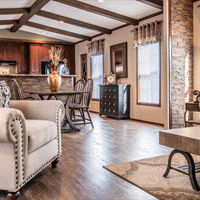



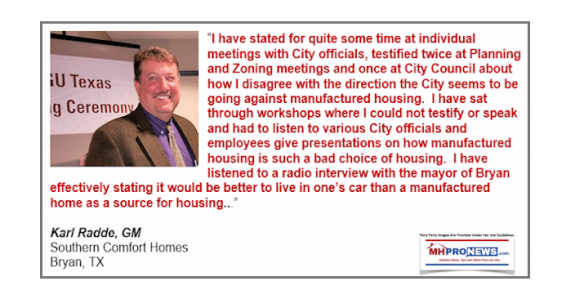

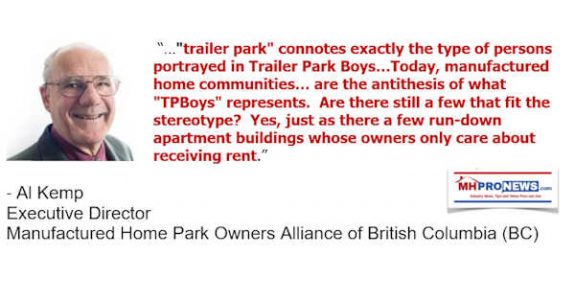
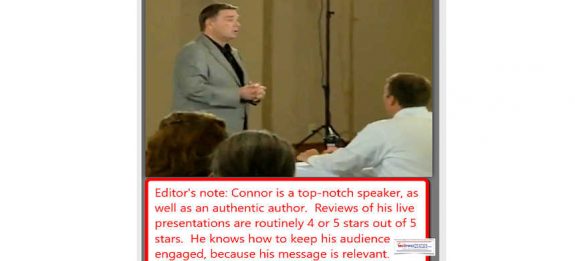

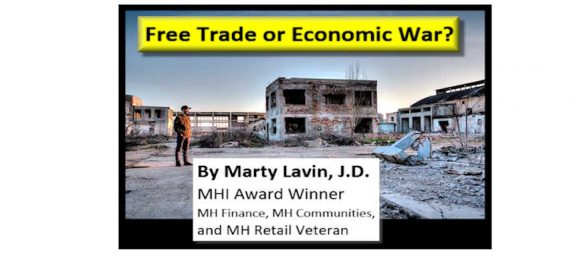
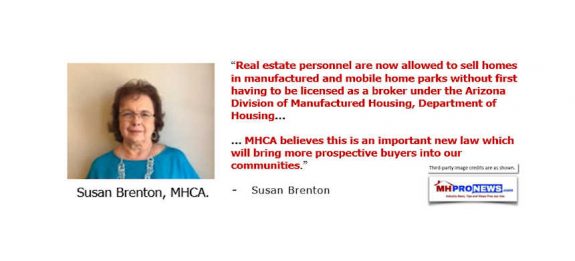
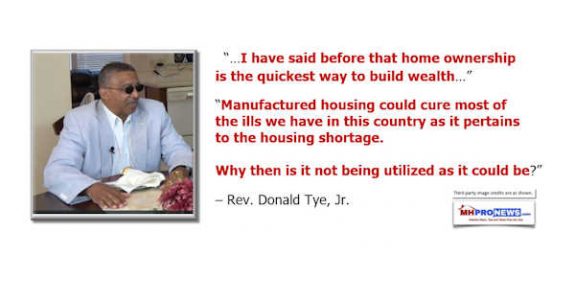
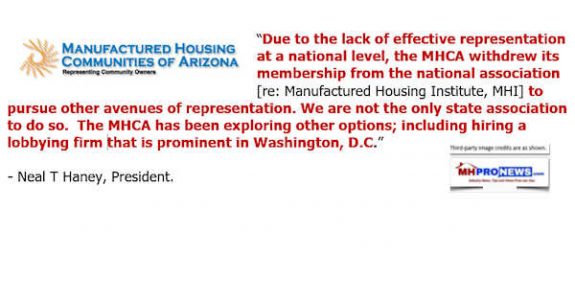

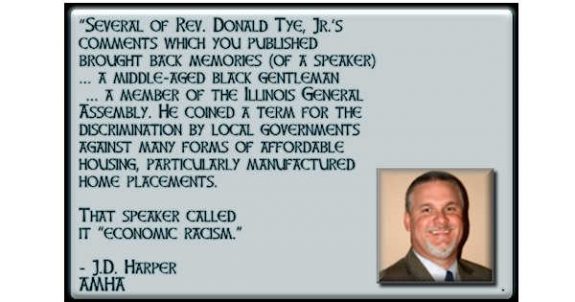


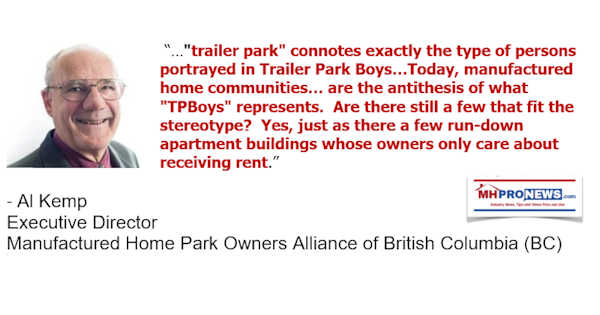
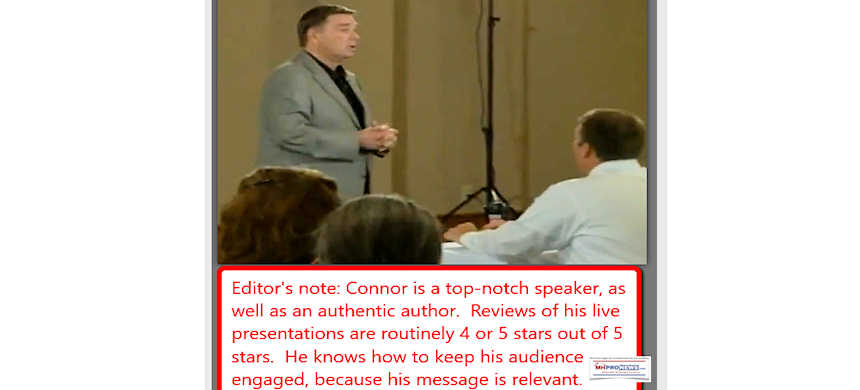


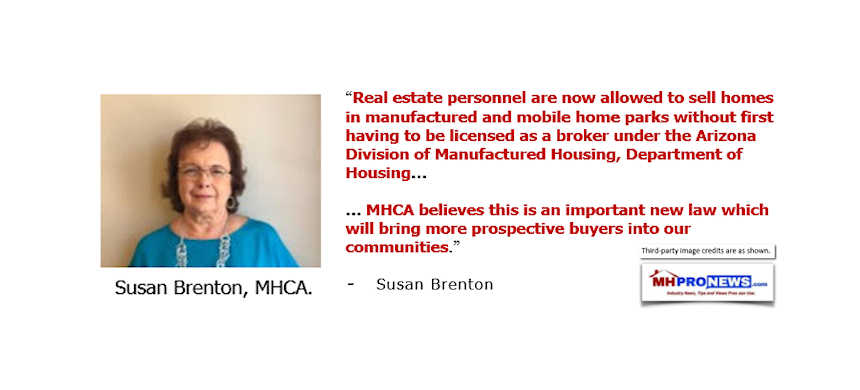
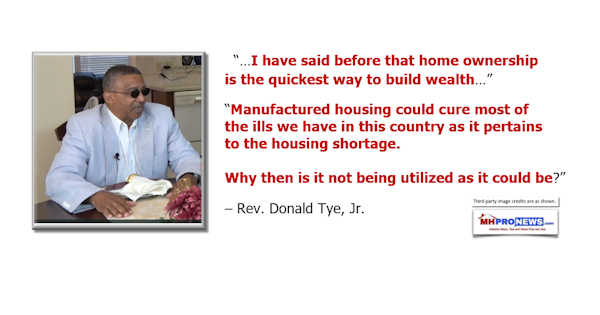
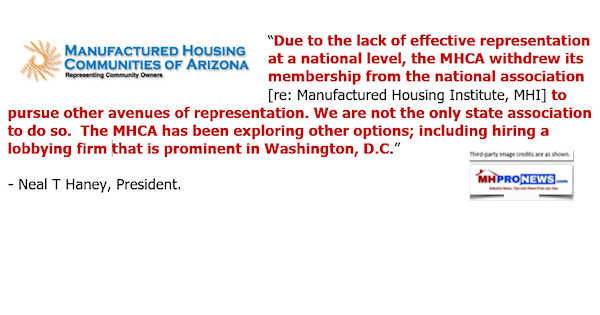

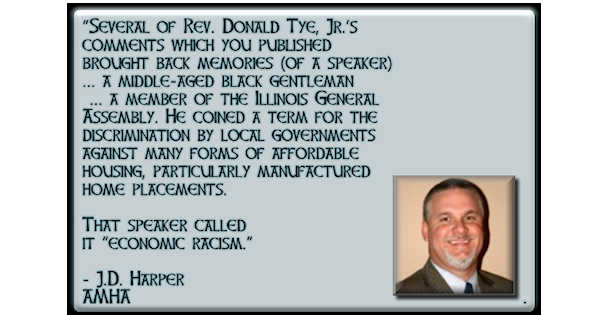
Karl Radde – TMHA, MHI, Southern Comfort Homes – Addressing Bryan City Leaders, Letter on Proposed Manufactured Home Ban
To All Concerned [Bryan City Officials, Others]: As the retail location referenced by Mr. Inderman, I would like to take a moment to address the …